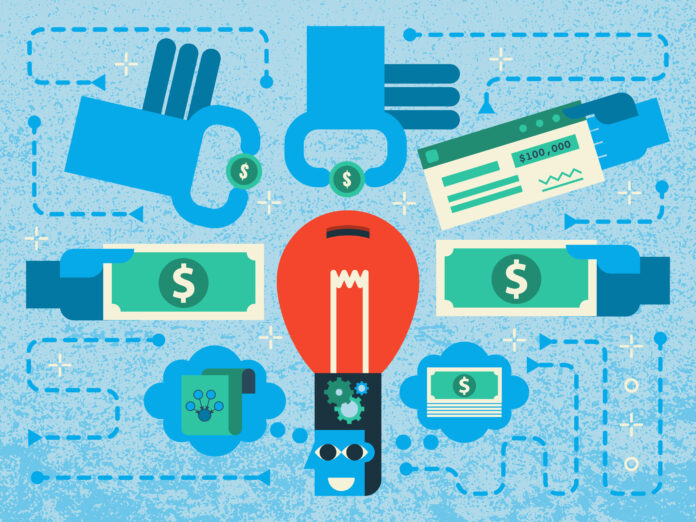Savvy SaaS buyers know the subscription fee is just the tip of the iceberg. The True Cost of SaaS hides beneath the surface – implementation, training, customization, and third-party integrations. This insider’s guide will equip you with the knowledge to make smart software purchases, ensuring you get the best value without unpleasant surprises.
Let’s Decode the True Cost of SaaS!
Is the ‘True Cost of SaaS’ Always Higher Than First Thought?
Yes, the true cost of SaaS is often higher than initially expected. As more workloads migrate to the cloud, managing cloud expenses has become a critical priority for CIOs. The subscription fees can add up over time, impacting the total cost of ownership.
Many companies made cloud commitments within the past three years, and as contracts have been renewed, they have seen price increases between 10% and 20%. Customers often walk into cloud agreements assuming they will save money, but because they don’t watch costs closely enough, they are unpleasantly surprised.
Visible SaaS Costs: Subscription Pricing Models Explained
Subscription pricing is the foundation of SaaS costs. Unlike traditional software purchases, you access the software for a recurring fee, typically monthly or annually. But with various subscription models, understanding the true cost goes beyond the headline price. Here’s a breakdown of some common models:
- Tiered Pricing: Offers various subscription levels with increasing feature sets and corresponding price points, catering to users with diverse needs.
- Per-User Pricing: Costs adjust based on the number of users accessing the software, making it ideal for businesses with changing team sizes.
- Usage-Based Pricing: You pay based on how much you use the service (e.g., storage space, API calls). Great for unpredictable usage patterns.
- Freemium: A basic, free version with limited features alongside paid plans with more functionality. Good for attracting new users and upselling later.
By understanding the Popular SaaS Pricing Models and their implications, you can accurately assess the ongoing cost of a SaaS solution and choose the plan that best aligns with your needs.
Hidden Costs of SaaS Beyond the Subscription Fee
The hidden costs of SaaS extend beyond the subscription fee and include various additional expenses that are often overlooked. Here are short explanations of these hidden costs:
- Implementation Fees: Some SaaS products may require upfront fees for implementation or setup to integrate the software into your existing systems effectively.
- Training Expenses: Training costs may arise as staff may need to be trained to use the software efficiently, which can incur additional time and financial investments.
- Support Costs: SaaS support services may be included in the subscription fee or may cost extra for premium services, impacting the overall cost of ownership.
- Integration Costs: Integrating the SaaS product with other software or systems within your organization may require additional investments, often involving collaboration with your IT team.
- Customization Costs: Customizing the software to fit your specific business needs can lead to additional expenses that should be factored into the total cost of ownership.
Considering these hidden costs is crucial for a comprehensive understanding of the true cost of SaaS and making informed decisions when evaluating and selecting software solutions.
Calculating the (TCO) Total Cost of Ownership – True Cost of SaaS
The Total Cost of Ownership (TCO) represents a thorough evaluation that extends beyond the initial purchase price of a SaaS solution. It encompasses all direct and indirect expenses associated with the software over its lifetime. The TCO for SaaS encompasses:
Upfront Costs
- Implementation, data migration, and integration fees
- Customizations to meet specific requirements
- Training for employees and administrators
Ongoing Costs
- Subscription fees based on pricing model (per user, usage, tiers, etc.)
- Fees for support, upgrades, and maintenance
- Costs to integrate with new systems down the road
Hidden Costs
- Storage overages and extra bandwidth usage charges
- API call costs for connecting to other cloud services
- Fees for additional features or functionality add-ons
Exit Costs
- Data extraction and transition fees when switching providers
- Software redudancy costs during migration periods
Here is a formula that incorporates the key components: TCO = UC + RC + OC + HC + EC.
To calculate the annual TCO, divide the total TCO by the expected lifespan of the SaaS solution. This will give you a yearly cost estimate, allowing you to better understand the actual cost of owning and operating the SaaS solution over time.

Factors to consider when budgeting for SaaS
When budgeting for SaaS, there are several important factors to consider in order to accurately estimate the true cost:
- Number of Users: Many SaaS pricing models are based on per-user or per-seat licensing. Having an accurate count of how many employees will require access is critical.
- Required Feature Set: SaaS solutions often tier pricing based on included features and functionality. Map your specific feature needs to the appropriate pricing level to avoid over-paying.
- Data Storage/Bandwidth Needs: Understand data storage quotas and forecasted bandwidth consumption. Overages can lead to unexpected fees.
- Integration Requirements: Factor in any costs for integrating the SaaS with existing systems via APIs or middleware. This can add up quickly.
- Training Requirements: Include costs for training administrators and end-users, whether self-service or instructor-led.
- Support Levels: Evaluate what level of customer support is required and if premium support incurs extra fees.
- Contract Terms: Shorter contracts increase flexibility but longer terms may offer discounting opportunities.
- Growth Projections: If your business is rapidly growing, budget for potential users and consumption increases.
- Customization Needs: Estimate costs for any desired custom configurations, coding, or branding.
- Implementation Services: Consider using the vendor’s implementation services, system integrators, or internal IT resources.
Strategies for Negotiating Better SaaS Contracts
Here are some effective strategies for negotiating better SaaS contracts and reducing the true cost:
- Leverage Competition: Get quotes from multiple SaaS vendors and use them as negotiation leverage. Vendors will be more willing to offer discounts to win your business.
- Commit Longer Terms: SaaS providers prefer longer subscriptions for predictable revenue. Negotiate better per-user pricing in exchange for a multi-year contract commitment.
- Pay Annually: Most vendors offer a 10-20% discount for paying the full annual amount upfront instead of monthly.
- User Minimums: If unsure about exact user counts, negotiate a minimum baseline with the ability to add more users as needed at the same rate.
- Request Free Services: Ask for free implementation, training, support or other services to be included instead of paying extra fees.
- Bundle Pricing: If using multiple products from one vendor, package them together at a discounted price.
- Avoid Overages: Negotiate higher data storage, API call quotas, etc. included with no overage fees.
- Termination Provisions: Ensure contracts allow termination for non-performance and data extraction at no cost.
- Price Protection: Lock in current pricing levels for a multi-year term to avoid future price increases.
- Make Them Show Value: Require proof through demos, free trials, and ROI projections before signing long-term deals.
Read Negotiating Your SaaS Contracts: Top Tips for Procurement Managers
Budgeting for SaaS: Annual vs Multi-Year Subscriptions
| Annual Subscriptions | Multi-Year Subscriptions (2-3 years typical) | |
| Pros |
|
|
| Cons |
|
|
Multi-year subscriptions can lower SaaS costs by securing discounted rates for 2-3 years. Yet, annual subscriptions offer flexibility, albeit at a higher price. The choice hinges on budget, software evolution pace, and confidence in the solution long-term. Often, companies leverage multi-year discounts while maintaining an annual renewal mindset.

SaaS Cost Management: Controlling Scope Creep and Add-Ons
While SaaS offers a seemingly straightforward pay-as-you-go model, the true cost of SaaS can balloon quickly if left unchecked. A significant culprit in this cost inflation is scope creep and uncontrolled add-ons.
Scope Creep:
Scope creep refers to the gradual expansion of features and functionalities beyond what was initially agreed upon. This can happen due to:
- Unclear requirements: Inadequate communication during the selection process can lead to misunderstandings about what’s included in the base plan.
- Feature Envy: The allure of additional features offered by the vendor can entice users to request them, even if not essential.
Strategies to Curb Scope Creep:
- Define Clear Requirements: Clearly outline your needs upfront and stick to them.
- Standardize Usage: Establish guidelines for how your team will use the SaaS platform.
- Monitor User Activity: Track user behavior to identify features that might be underutilized and potential for streamlining.
Add-Ons:
Many SaaS providers offer enticing add-on features that unlock additional capabilities. However, these often come at an extra cost. Here’s how to manage them:
- Evaluate Necessity: Carefully assess if the add-on is truly essential or if alternative solutions exist within the base plan.
- Negotiate Pricing: Don’t hesitate to negotiate pricing for add-ons, especially if you’re a high-volume user.
- Consolidate Vendors: Consider if the functionality offered by the add-on can be obtained from another, more cost-effective SaaS solution.
By implementing these strategies, you can gain control over your SaaS spending and ensure you’re paying only for the value you’re truly receiving.
SaaS Cost Optimization: When to Upgrade, Downgrade or Switch
As businesses grow and evolve, their software needs can change significantly. To optimize the true cost of SaaS, it’s crucial to periodically evaluate whether your current SaaS solutions still align with your organization’s requirements. This evaluation should consider when to upgrade, downgrade, or switch to a different solution altogether.
- Upgrade: Consider upgrading if your current plan is maxed out on features, storage, or users. However, ensure the upgrade unlocks functionality you’ll genuinely utilize. Upgrading can be cost-effective if it eliminates the need for multiple, less comprehensive tools.
- Downgrade: If you’re not using all the features you’re paying for, downgrading can save significant costs. Analyze usage data to see which features are essential and which can be trimmed. Downgrading might also be an option if your team size has shrunk.
- Switch: Don’t be afraid to explore alternative SaaS providers. The market is constantly evolving, and new solutions might offer better value or functionality for your specific needs. Carefully evaluate competitors’ pricing structures, features, and ease of migration before switching.
By regularly evaluating your SaaS subscriptions and considering upgrade, downgrade, or switch options, you can ensure you’re getting the most value out of your software purchases and keeping the true cost of SaaS in check.
ROI of SaaS: Measuring the Value
While the subscription model of Software as a Service (SaaS) can offer cost savings and flexibility, it’s crucial to measure the actual return on investment (ROI) to ensure that the true cost of SaaS is justified by the value it delivers. Evaluating the ROI of SaaS solutions involves both quantitative and qualitative analyses.
Quantitative ROI Measurement:
- Calculate cost savings compared to on-premises software
- Measure productivity gains from efficiency and automation
- Assess impact on revenue generation.
Qualitative ROI Measurement:
- Evaluate operational agility and response to market changes
- Determine competitive advantages gained
- Consider risk mitigation benefits (security, compliance, etc.)
To accurately measure the ROI of SaaS, it’s essential to:
- Set clear KPIs and metrics aligned with business goals
- Collect data before and after implementation to track changes
- Account for all direct and indirect costs
- Involve stakeholders from relevant departments
By consistently evaluating SaaS ROI, organizations can make informed decisions on renewing, upgrading, or discontinuing subscriptions to ensure the true cost delivers tangible value.
How does StaQ.ai contribute to better comprehension of SaaS TCO and ROI?
How StaQ.ai can streamline your assessment of SaaS TCO and ROI?
StaQ.ai offers an innovative solution suite that simplifies digital transformation for organizations, providing tools and insights to drive business growth through informed technology decisions. By leveraging StaQ.ai’s suite of products, such as StaQ Copilot, businesses can streamline their assessment of SaaS Total Cost of Ownership (TCO) and Return on Investment (ROI).
StaQ Copilot, an all-in-one self-serve platform, enables users to buy the right software at the right price 10X faster, assisting at every step of the software selection and purchase journey. This tool can enhance the evaluation process by providing efficient and informed decision-making support, ultimately optimizing the TCO and ROI analysis for SaaS solutions.
Unlock the power of StaQ.ai to uncover the true cost of SaaS and make informed decisions that drive your business forward.





